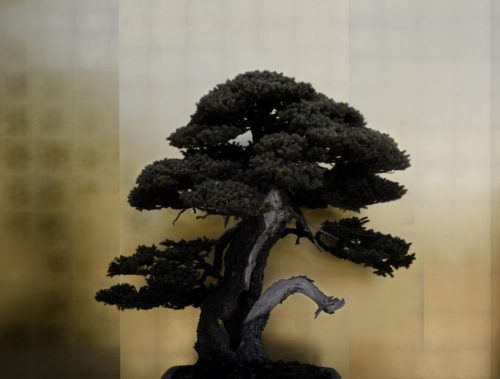
Ryo Owada, photography.
“…the threatened man looks at himself with the eyes of his master.”
Ernst Bloch
“Abjection is therefore a kind of narcissistic crisis: it is witness
to the ephemeral aspect of the state called “narcissism” with
reproachful jealousy, heaven knows why; what is more, abjection
gives narcissism (the thing and the concept) its classification
as “seeming.””
Julia Kristeva
“The conscious field is so narrow, and on all sides it shades off into darker edges and dissolves. Even before a mental event is forgotten, in fact even without it being forgotten, much in it is not conscious.”
Ernst Bloch
Bloch says mental life is framed by morning and evening. The nightdream moves in the forgotten and repressed. The daydream, he says, is what has never been experienced as present. The unconscious is, of course, not unconscious of itself like a stone. It is simply buried in the sediment of ourself.
Bloch wrote of the mirror. The wish embedded in the mirrored image. We see what we wish to see. Sort of. The mirror image is what was wished by the master. And there is, says Bloch, a kind of generalized aspect to this. Like the practiced smile of the salesperson. Mirrors as we know them began in the 17th century. Although silvering of glass mirrors began in the 16th. And ancient civilizations all had shiny reflective surfaces designed specifically for looking at one’s image. Today, aluminum is used more often than silver. The idea of the mirror is now a crucial aspect of narrative. The two way mirror appears, literally, in almost every crime film or TV show made in the last twenty years. It is the proto surveillance signifier.
That Lacan’s theory of cognitive development hinges on the metaphor (and its more than a metaphor of course) is very intriguing. The shop window is partly a mirror. This was a note of Bloch’s. The ruling class coerces the shopper to look at themselves as they look at what they want to buy. The mirror is linked to performance. It is linked to rivalry, certainly, something Lacan saw as elemental. Again as Bloch noted, sport takes place in the pool or on the field, but if sport became life the prize might be a gold medal for suffering in silence. Or learning a fixed grimace to substitute for a smile. Do we smile at ourselves in the mirror in private? I don’t know, but I don’t think I do very often, if ever.
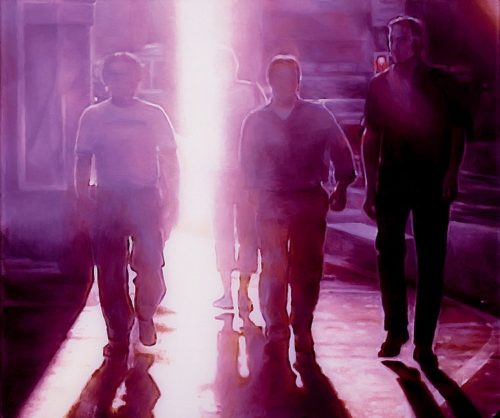
Sylvia Gertsch
The shop window became the commercial eventually. In both, and throughout, the suggestion of the whole is found in details. And these details make the shopper just slightly uneasy. To stand before the shop window too long is akin to standing before the mirror for too long. What is the nature of that crime? The holiday shopper is buying for others, and so the attention on the window or display is altered. It is, as Bloch says, pious. But it is also resentful. In advertising there has been an increase in the copy for labels. This makes J.Peterman the Tolstoy of advertisers. The label, the expanded label, explains our exclusivity.
The more luxury oriented the commodity, the more extensive the label narration. The buyer of insanely expensive jewelry does not want to simply buy it. He or she wants to be told the story of their specialness.
There is a loss of humanness in contemporary society. And it is not a question of not feeling pleasure because people experience pleasure. Nor is it, really, any incapacity for sorrow. Although I think there is, generally, a degree of that incapacity. It is more the substratum of these feelings. Something in that substratum is cannibalistic.
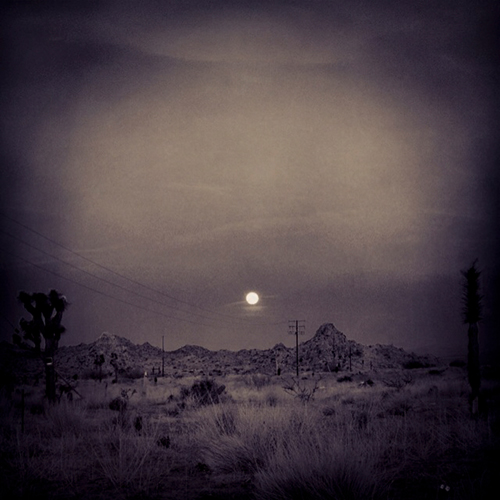
Nancy Baron, photography.
Social media is now the place to play dress-up. It is the cyber cotillion or debutante ball, in a sense. It is the post modern masque. Except it is anti-ritualistic. It is ahistorical. It is secular and presumed egalitarian in some sense. None of that matters, much. Social media is an outlet for that urge to put on a mask. The putting on of this mask is a way to obfuscate the reality of already wearing a mask. The festive masque evolves in fascist seriousness (Bloch). All the fantasies of the masque, of the costume ball, became for the bourgeoise a reality — this is the heritage of the Ku Klux Klan among others. And intersecting with this is the evolution of the uniform.
There is in popular culture, today, in Hollywood especially, a new normalizing of saccharine emotion. The military and its ritualized etiquette is exalted and made a form of worship. Watching the new Designated Survivor (with Kiefer Sutherland, no stranger to reactionary entertainments) the premise has to do with a terror attack that kills most of the government, and hence the *designated survivor*, a low ranking functionary, is promoted to the office of president. This affords the writers and producers to endlessly reenact the formalities of military worship. The Sunday school manners of West Point are made into a kind of shadow character. *We* are to be saved by superficial adherence to sentimentalized emotion. And this is not unrelated to what Sartre said of Genet, that when we read ‘is’ what it really means is ‘becomes’. The belief in illusion over truth.
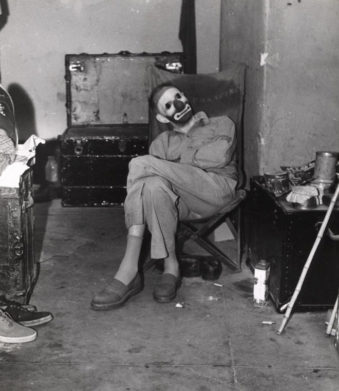
Clown, backstage. Photographer unknown. Date unknown.
Of course Genet recognized something of the truth of criminality when he wrote of it as a trade. The thief was there to act as stand-in for a real person, a professional fraud. And there is always an attraction (as I believe Orson Welles said) to the condemned. Contemporary culture has flipped back to insert the uniform, the soldier or police officer, as professional fraud, but a fraud in which the bourgeoisie *want* to believe. The syrupy maudlin somberness of Sutherland standing alone, in his role as President, before the flag draped coffin of a dead special forces Marine, is the new cotillion for the white liberal. There is much dialogue given over to the idea of *service*. Thank you for your service is repeated numerous times in all these recruitment entertainments. The sexual fetishizing of the uniform is now barely acknowledged. The homoerotic titillation of the exaggerated masculinity of the special forces soldier is not even disguised.
“Catholicism is an S&M cult masquerading as a religion. It is the largest, longest-running Fetish Ball in history. There are heavy sexual undertones in its aesthetic of darkness, in its mandatory confession of sins, in its clerical vows of celibacy, in its nutty doctrine that priests can literally turn bread and wine into Christ’s flesh and blood, in its teaching that the son of God popped out of a virgin’s vagina, and in its insistence on showing the crucified Jesus in all his gore-splattered pain. (Note that Protestants display empty crosses rather than crucifixes.) It’s no coincidence that sadomasochistic role-playing borrows heavily from Catholic iconography: undefiled virgins, stern confession-booth priests hearing your most embarrassing secrets, and evil nuns, who were history’s template for the modern dominatrix.”
Jim Goad

Max Dupain, photography.
The white liberal viewer finds an erotic subtext to all PTSD stories. They can participate in the war crimes of Empire by proxy. And at the same time wax regretfully at the crime they actually find quite acceptable. When a prisoner was released from Guantanamo Bay this week, after being held without charge for fourteen years, the mainstream media barely took note. This would elicit the wrong kind of regret. This prisoner committed no crimes, hence his suffering is without value. Without exchange value. One cannot commodify the sinless.
The mirror is purest expression of bourgeois aesthetic sensibility one can find. The techne of reflectivity is always imperfect. Bloch’s shop window extrapolated outward is now internet online shopping. And from this window appears, delayed, the commodity — sent by post, or appearing as access to a prohibited site; but whatever it is, it is always magical and materializes in some way that defies our logic of childhood physics.
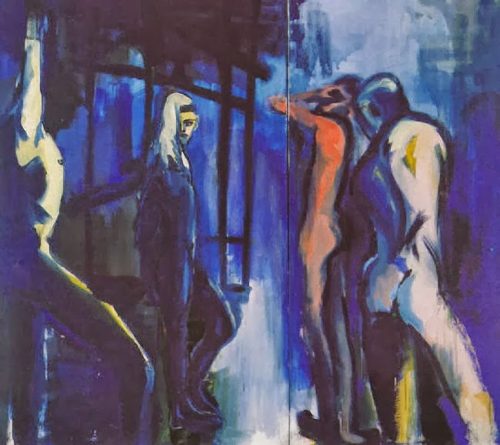
Rainer Fetting
“Forms are the abstract of social relationships: so, formal analysis is in its own modest way an analysis of power.”
Franco Moretti
The idea of entertainment today in the broadest terms can be divided into two realms. The populist stuff like The Walking Dead or Breaking Bad, and the prestige stuff you see at Lincoln Center or in various up market galleries. This reminds of something Moretti said in an interview a few years ago…
“I’m discussing Victorianism, partly with reference to today’s American culture. I show that in the bourgeoisie, as the ruling class of capitalist times and in order to secure hegemony for the social formation of capitalism, has given up many of their bourgeois values. Instead, they started promoting again all the aristocratic and Christian values”.
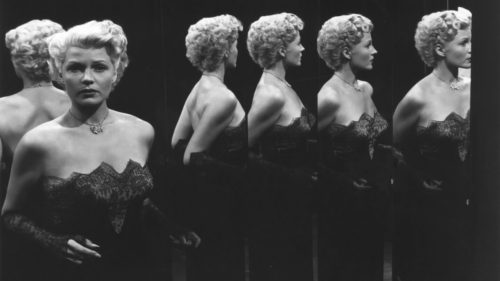
Lady From Shanghai (Orson Welles,dr.) 1948.
The new aristocratic values are very obvious, I think. The endless stream of historical series focused on royals or the very rich. The idea of Christian values is more subtle. In the U.S. it really means Puritan values. The anti-Trump hysteria in the bourgeoisie is partly a fear of losing that developing sense of Aristocratic privilege. White liberals don’t care if a candidate is sexist or racist. All candidates are sexist and racist. They care, in terms of Trump, that he suggests a validation of the underclass. Now, he doesn’t do that, but that’s the optics. Trump isn’t mirroring anything. He is an instrument for ruling class sustainability. He is quiet clearly there to promote Hillary Clinton.
“…we must ask whether a cultural emphasis on operative
thinking has had, as an unintended consequence,
a deleterious effect upon figurative capacities …. the
decline of incidental learning, the waning of interest
in the arts…”
H. Gardner
The return of the aristocrat is linked pretty directly with this waning of interest in culture overall. The privileged white bourgeoisie in the U.S. have no cultural curiosity any longer. Almost none. And the shop window and the display case no longer drive the idea of commodities. Exchange value is only a principle for financial capital to sustain itself, I guess, but the point here is that cultural curiosity is that which investigates the objects of human creation. And increasingly there is less and less surety about what that means. Edmund Burke said beauty was that which was gifted with human love. But he also said beauty was a social quality. And the sense I have, which is a depressing one, and one I equate with entropy, is that the human/social has been lost. There is calculation in its place.
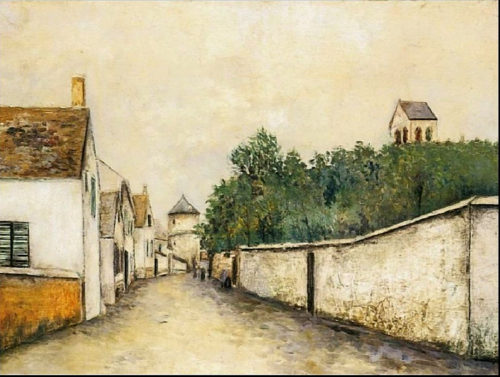
Maurice Utrillo
Darwin said in his later years that he had lost the capacity to appreciate poetry or the works of Shakespeare. He said his mind was only capable of distilling general laws from large collections of facts. This loss of ‘incidental’ learning is the loss of a trust in being alive. And yet again, the zombie trope is relevant. That the contemporary societies of the West are in the grasp of generalized autism and regression is perhaps clear, but beyond that comes this substratum of living without life.
“Two aesthetics exist: the passive aesthetic of mirrors and the active aesthetic of prisms. Guided by the former, art turns into a copy of the environment’s objectivity or the individual’s psychic history. Guided by the latter, art is redeemed, makes the world into its instrument, and forges, beyond spatial and temporal prisons, a personal vision.”
Jorge Luis Borges
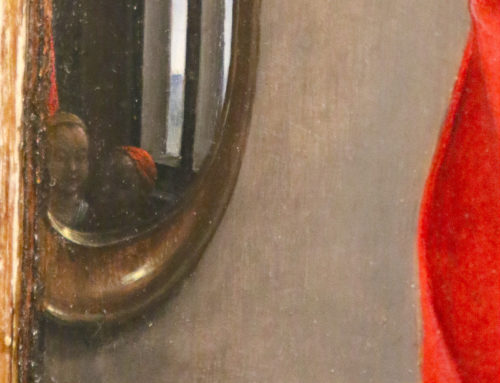
Hans Memling (1480’s). Virgin and Christ Child (detail of the so called third mirror).
The mirror is, conceptually, reflecting the world around us. Except its not. Not quite. Eighty percent of light returning to the eye is considered a quite good mirror. We recognize this, but accept it. What matters is how we look. Social media is a kind of personal compact mirror, a construction of an ideal self in a sense. This brings me back to Bloch again. That two way mirror in crime and police films and TV is our bad dream. It is the sense of always being looked at by authority. By, in particular, institutional authority. One is scared by the rear view mirror, by what might be gaining on us. The images of rear view mirrors in cars are always hostile. Always about death. Whoever is back there, it is someone infused with the death drive, with a quality of decay. For mirrors decay and our intuitive feeling is that our image decays as well. Dorian Gray was a profound metaphor on many levels. Surveillance is, it occurs to me, an idea that feels linked to the graveyard. Close circuit monitors are mirrors, too. And it may be that all screens carry an association of mirroring.
“Experience shows that persons suffering from the narcissistic neuroses have no capacity for transference, or only insufficient remnants of it. They turn from the physician, not in hostility, but in indifference. Therefore they are not to be influenced by him; what he says leaves them cold, makes no impression on them, and
therefore the process of cure which can be carried through with others, the revivification of the pathogenic conflict and the overcoming of the resistance due to the repressions, cannot be effected with them. They remain as they are.”
Freud
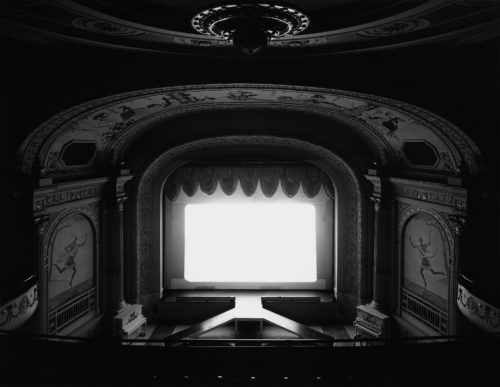
Hiroshi Sugimoto, photography (Cabot St Theatre).
And all mirrors connect to the return of the repressed. In any event Bloch notes the alternative ending to ‘Happily ever After’ in many German fairy tales…’..and if they are not dead, they live there yet.’ The search in narrative, today, for mysterious places falls readily into the supernatural. Or, the apocalyptic. T.V shows routinely posit end of mankind scenarios from plague or zombie or vampire. But in almost every case the desire is for reconstruction and a new version of the same. The very idea of Utopia is now lost in the desperation of the search for a mythic *place*.
The suspicious quality of mirrors was noted as far back as Agrippa and DeBrune. The sense that mirrors were reflecting only the superficial. But they also suspected something more. Alongside this is the Albertian belief that painting was a *window on the world*. And this is not unimportant. The window has always been the escape, the release valve for that which formed in the darkness and shadows. Mirrors and windows share a good deal.
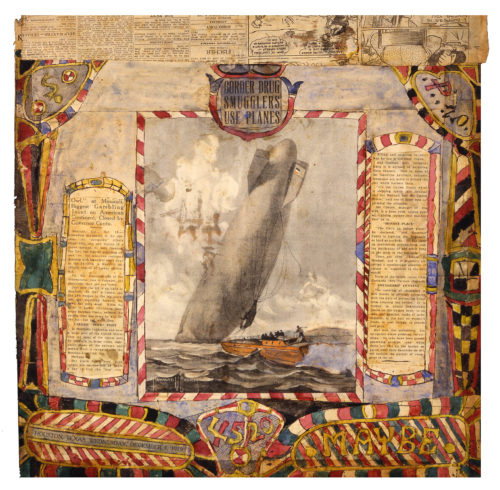
Charles A.A. Dellschau
“First there is nothing, then deep nothing, and finally blue depth.”
Gaston Bachelard
Windows in Renaissance painting suggest an escape from the mirrored image. It is blue skies that form a sense of spiritual liberation. La Fontaines wrote of great trees that they were neighbors to heaven, and that we sense awe before great trees because their roots touch the underworld. Such poetic reveries are shunned in a culture of screens. Sailors refer to long distance ships as blue water ships. Blue water is deep.
“People have always been divided into two groups: victims and murderers. I don’t know whether it is possible to free oneself from one group and switch over to the other during one’s life.”
Unica Zurn
“What is the source of our first suffering? It lies in the fact that we hesitated to speak….it was born in the moments when we accumulated silent things within us.”
Bachelard
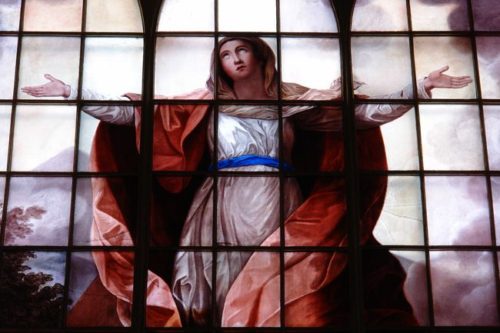
Francis Eginton. Painted glass window 1795 (St Alkmund, detail).
Mirrors have links, too, to silence. I think Bloch sensed this. The shop window certainly does. And the religious, the spaces we associate with cathedrals, are imbued with silence. But suffering, the silent suffering, is of a particular kind. In this age of endless image, of photographic documentation of everything, the ability to create aesthetic counter documentation is important. Not alternative readings, for that is hugely important, but aesthetically, in a production of cultural objects, the un or anti document becomes something outside not just exchange value and equivalence, it becomes something that penetrates the substratum. We awake when the shop window is broken. Broken mirrors and 7 years bad luck. I suspect this taboo took form because of the truth of its opposite. (Romans came up with that, I read. And the remedy was to bury the shards under moonlight late at night. Which is somehow not surprising).
The idea of equivalence then, of exchange, is also one in which false equivalence surfaces and resurfaces. The ideas of mainstream media are awash in false equivalence. I’m speaking culturally here, and I recently watched an amusing exchange between Germaine Greer and some interviewer on the subject of transgender women. And on Caitlyn Jenner. When the interviewer said but Jenner will get some award, one nobody has ever heard of, but never mind, and Greer says this is misogyny. Tolerance is obscured in the service of something that masks misogyny. That trans people are abused every day in the U.S. and Europe becomes a story about a celebrity and a false identity swap in a sense. Wars become about something else, always. But I digress a bit. The windows of Renaissance painting, are both exits and entrances. Egress and ingress.

HIlma af Klimt
“Masaccio employs his powerful naturalism of space, light, and psychology to express the reality of the supernatural—and that is the primary concern of Renaissance art.”
Rona Goffen
The supernatural might be the primary concern of all art. But certainly the window and mirror are not quite opposing versions of the same thing. They are ways to search for death. For an acceptable death. The reflective image is a fugitive image.
“Or if one were given to the brand of speculative enterprise exemplified by certain Christian heretics (for instance, those who worshipped Judas as a saint, on the grounds that his betrayal of Christ, in leading to the Crucifixion, so brought about the opportunity for mankind’s redemption) one might locate the necessary motivational origin of the act in the counter-agent. For the hero would not have been prodded to escape if there had been no villain to imprison him. Inasmuch as the escape could be called a “good” act, we might find in such motivational reduction to the counter-agent a compensatory transformation whereby a bitter fountain may give forth sweet waters.”
Kenneth Burke
Counter documentation, the broken mirror. The shop window shattered by the thief who reaches in to steal the object of desire (think of the scene in A Prophet, by Audiard, where Malik looks at the expensive shoes in a shop window just before the explosion of violence). The gestures of negation or refusal, which Coleridge noted came from the child’s turning his head away from food offered on spoon or fork. Kenneth Burke notes, too, that Bergson’s scientistic notions of the negative are fueled by desire, and while reasonable, should be less science and more dramatical. And this is key, I think. Bergson said the good was equated with purpose. As an example. For this is another sort of poetics of space. There is, I think, even a loss of human direction, that accompanies the loss of narrative. There is a diminished sense of gesture, today. The wearing of headphones or ear buds, the fixation on the tiny screen or portal of the smart phone, or the windshield of the car. It is a society of filters. And once the filter is fixed, the ascension of false equivalence becomes fixed and determinations of false or truthful are irrelevant.
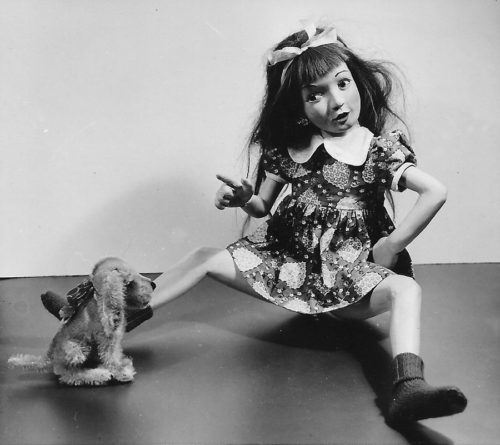
Morton Bartlett
“…recall that Hegel describes the emergence of modern bourgeois society as a particular (and more or less peaceable) arrangement between identity and difference. This arrangement sought to achieve an intersubjective transcendence of individual particularity, which was, in turn, collectively lived out as “the ethical substance of the state.” To reduce this formulation still further, one could simply say that the positive value of subjectivity according to Hegel is incomplete without an encounter with its opposite, a negation. We should of course also recall the productive role of intimacy in Hegel. It was the modern family that made the individual ready for inclusion within the state’s general will. “
Mike Hill
A few sentences later, Hill adds….“And it is important to Adorno in a similar way, because the pretenses to coherence and wholeness as they exist under capitalism only too obviously fail to produce real (i.e., material) forms of equality and universality.”
The false equivalence. Material equality is erased by abstract filtered ideas of equality — by the receding of any space for counter documentation. Without that countering trope there is only the hegemonic rule of shiny reflective surface. All things shiny are applauded. There is something sinister in the shiny hair of talking heads, or Trump, or in tanning salon tans, or in the decay of Hillary Clinton, both her image and her rhetoric. She is the prisoner of the screen, of emails and leaks and that disquieting quality of gestural incoherence. The disappearance of the counter agent is seen in the disappearance of dissent. Not that dissent is not there, but that is is ‘turned off’.

Klaus Pichler, photography.
In Adorno’s terms, the motivated subjective negation is today what Mike Hill calls a politics of misrecognition. The rhetoric of oneness that is drummed on relentlessly in marketing and media is really just the erasure of class conflict. The new entertainments of military heroism and more, of military idealist eros are expressions of negation, or marginalization for lower class validity. The fact is that even as black characters appear in this paeans of militarism and sacrifice (the morbidity factor) they are being erased in reality. Among the messages is that a surplus or disposable population make great cannon fodder, with the bonus that they may be officially granted ritual kitsch grief.
In the mirror we see what we want to see. And what *we* want is to break the mirror, to shatter the display case. This *desire* is exactly what is coerced out of mind. In many of these post apocalypse narratives there is a curious ability for wi-fi signals to continue on uninterrupted. And where there is, in the plot, an interruption, the discussion becomes about how to reconnect. For that interruption is the source of panic. This substratum I posit is the sedimented cold stone floor of something nihilistic. The mirror of social media is the constructing of (among other *identities*) the new neo fascism of the Obama/Clinton epoch. The costumes of the Ku Klux Klan have given way to the costumes of the tolerant white liberal who carries out the same duties. Only now it is TED talks and Yoga classes. And Trump enters as the avatar of anachronistic oratorial fascism. The necessary dumb show, or phantom collective memory trace of earlier destructive forces. And there is much more to be investigated in this new masculinity of the Clinton era *feminism*. The Caitlyn Jenner comedia of subterranean abyssal misogyny — the removal of those windows to the blue skies of awakening. The white liberal support for Clinton, in the name of tolerance and racial unity is not just its opposite but a positing of a new toxic masculine whiteness; one that is going to protect the mirrors and glass of the shop windows. It is a misrecognition of white patriarchy in its new costume.

Speak Your Mind